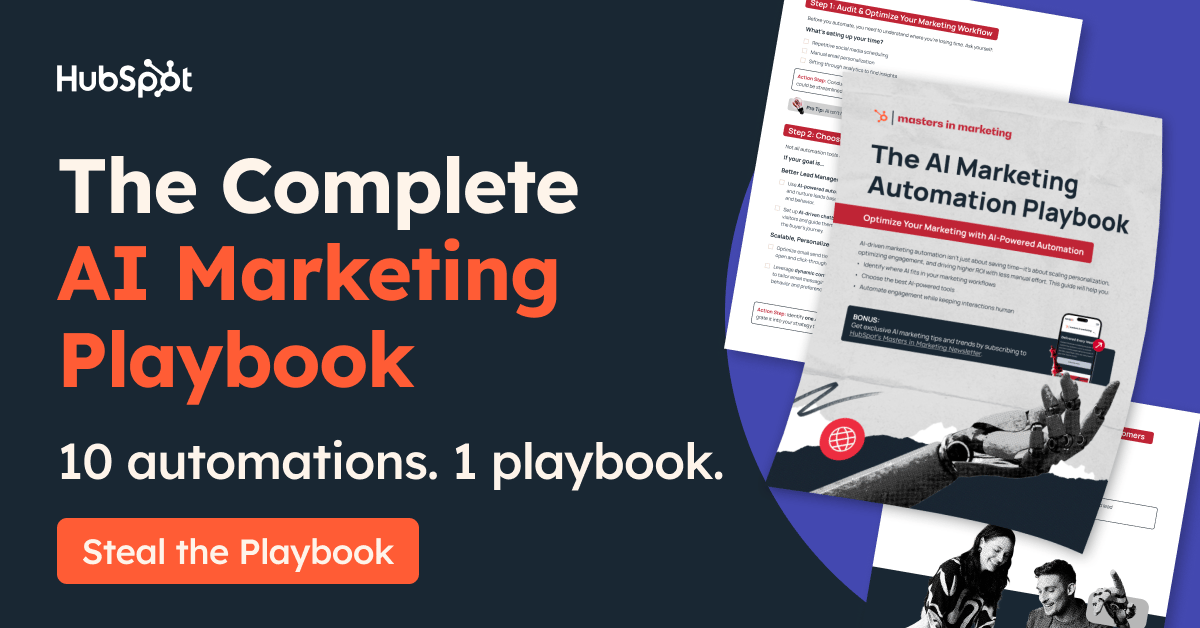
Good morning! Big hardware and big AI services share the stage today. Nvidia and AMD reportedly agreed to an unprecedented revenue-sharing condition to keep selling AI chips in China, SK Hynix laid out a bullish path for HBM memory, and Google began testing an AI-driven Google Finance. We also look at Apple’s Siri delay and what it may really mean, DeepMind’s “virtual satellite” for Earth mapping, and a NASA–Google medical assistant designed for long space missions.
Unlock the Power of AI With the Complete Marketing Automation Playbook
Discover how to scale smarter with AI-driven workflows that actually work. This playbook delivers:
A detailed audit framework for your current marketing workflows
Step-by-step guidance for choosing the right AI-powered automations
Pro tips for improving personalization without losing the human touch
Built to help you automate the busy work and focus on work that actually makes an impact.

1. Nvidia and AMD agree to a 15% China revenue share with Washington
To secure U.S. export licences for China, Nvidia and AMD agreed to remit 15 percent of revenue from China sales of their tailored AI chips, Nvidia’s H20 and AMD’s MI308. The arrangement followed a meeting between Nvidia CEO Jensen Huang and President Donald Trump and is described by export control experts as unprecedented. Nvidia had expected to sell roughly 1.5 million H20 chips in China this year before licensing delays, and analysts estimated about 23 billion dollars in potential revenue tied to that part, making the 15 percent share material. Critics in Washington argue the sales could strengthen China’s military AI capabilities, while the administration has begun issuing licences after the talks.

2. Apple’s Siri delay may mask larger AI plans
Apple’s decision to postpone key Siri upgrades drew attention to perceived AI lag and internal shake-ups, but the publication suggests the most significant setback is not the highly publicised feature that would let Siri pull personal data from messages, emails and photos. The piece frames the delay as potentially concealing broader AI ambitions in the works, with Apple continuing to reallocate teams and resources behind the scenes despite the slower-than-expected Siri rollout.

3. SK Hynix projects 30% annual growth for AI memory to 2030
In an interview with Reuters, SK Hynix said the global market for high-bandwidth memory used in AI systems could grow about 30 percent per year through 2030. The company expects the custom HBM segment to reach tens of billions of dollars by decade’s end and says demand from cloud buyers like Amazon, Microsoft and Google will likely be revised upward. SK Hynix, currently a major HBM supplier to Nvidia, highlighted a shift to more customised HBM4 with customer-specific base dies, which makes swapping suppliers harder. South Korea’s trade envoy also said Samsung and SK Hynix would not be subject to proposed 100 percent U.S. chip tariffs if those firms manufacture in or commit to the United States.

4. Google tests an AI-powered Google Finance
Google announced a U.S. test of a reimagined Google Finance that lets users ask detailed financial questions and receive AI-generated responses with links to source material. The pilot adds more advanced charting with technical indicators and candlestick views, expands real-time data coverage to commodities and additional cryptocurrencies, and introduces a live news feed. Users can toggle between the new and classic designs as the experience rolls out over the coming weeks.

5. DeepMind’s “virtual satellite” maps Earth in near real time
Google DeepMind introduced AlphaEarth Foundations, an AI model that merges trillions of observations from satellites, radar, lidar and simulations to map terrestrial land and coastal waters across the planet in near real time. DeepMind describes it as a “virtual satellite” that can generate data at roughly 10 square-metre resolution and achieved an average error rate about 24 percent lower than comparable AI systems in tests from 2017 to 2024. More than 50 organisations have tried the system, including Brazil’s MapBiomas for Amazon monitoring, and Google is releasing datasets through Earth Engine for research and planning.

6. NASA and Google build an AI medical assistant for deep-space crews
NASA–Google has created a prototype called Crew Medical Officer Digital Assistant that runs in Google’s Vertex AI and is designed to help astronauts diagnose and manage health issues when communications are delayed or unavailable. In initial trials across three scenarios the assistant’s diagnostic and treatment suggestions were judged likely correct 74 percent of the time for flank pain, 80 percent for ear pain and 88 percent for an ankle injury by a panel that included an astronaut physician. NASA owns the app’s source code under a fixed-price Google Public Sector subscription, and the roadmap includes more device data and training for space-specific conditions such as microgravity.

Want to do more with AI and Automation?
Get access to all of my tools, guides, prompts and automations. Let AI and Automations do the work for you.
What you’ll get:
15,000 prompts for any industry
5,000+ Make templates to automate any task
Premium custom built workflows (EmailFlow, FormFlow Pro, ChatFlow and more)
Every resource I’ve ever built
How would you rate today's newsletter?
Stay tuned for more updates, and have a fantastic day!
Cheers,
Zephyr

